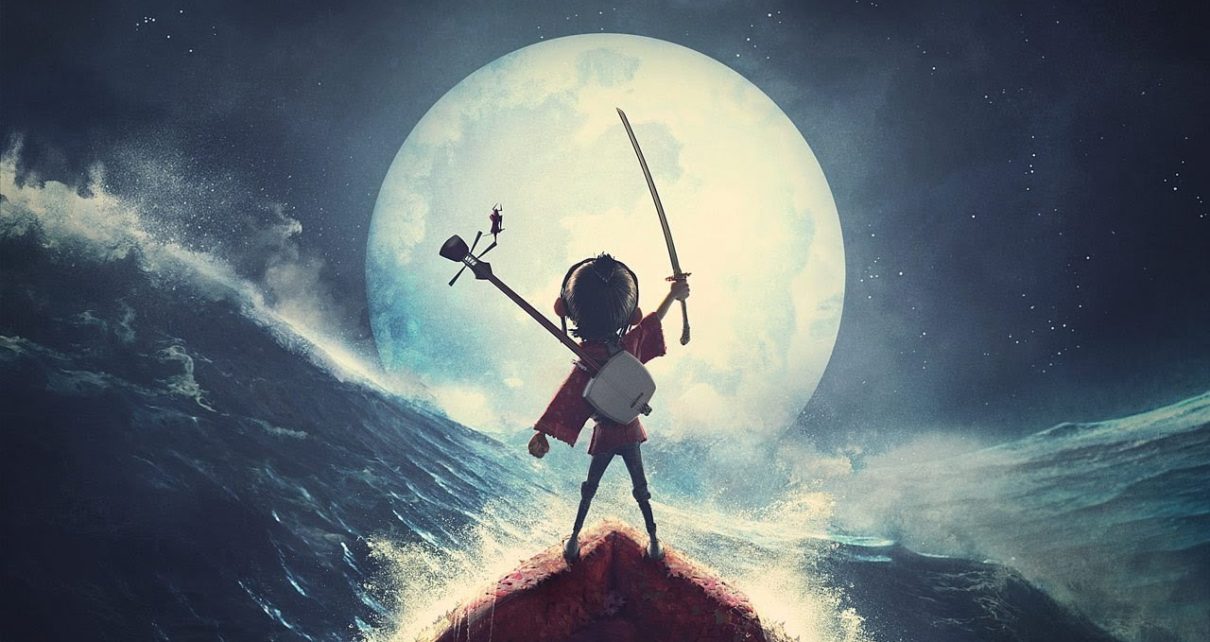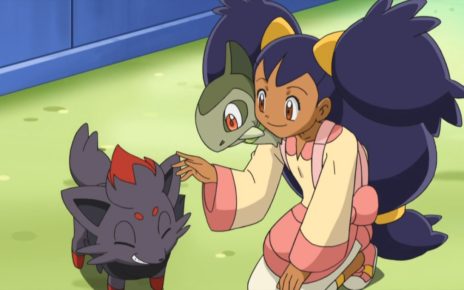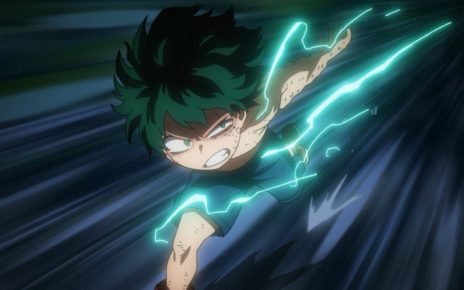Although stop-motion is a rather ancient technique in terms of animation, mostly associated with the likes of Gumby and Wallace and Gromit, this decidedly analog art form, invented circa 1898, has made enormous strides. Compare Rudolph The Red-Nosed Reindeer to fan favorites like Henry Selick’s The Nightmare Before Christmas (1993) and Wes Anderson’s Fantastic Mr. Fox (2009) — or his upcoming Isle of Dogs.
Characters that have been moved by hand are always going to be charmingly imperfect, with watching stop-motion feeling much like the intimacy of watching a play instead of a film. But there are few studios that push the genre to its full potential, never for a second letting stop-motion rest on its clay laurels. Laika is one of those studios.
The Oregon-based stop-motion studio, helmed by Travis Knight (son of Nike founder Phil Knight), is doing some of the most interesting stuff in stop-motion right now. As the first studio to take advantage of Rapid Prototyping (a set of techniques that includes 3D printing) to create its puppets faces, and many of its props, it’s lead the way for a stop-motion renaissance — even in a digital world.
Its 2009 film Coraline (fans of Nightmare will be happy to know Selick was sought out to direct it) was the studio’s first experiment with 3D printing, but its 2016 release Kubo and the Two Strings is the studio’s best release yet, taking the characteristics that make a Laika film unique (among them creepiness and protagonistic eyeballs), and polishing them until they gleam with movie magic. Here are three reasons why Kubo is Laika’s masterpiece.
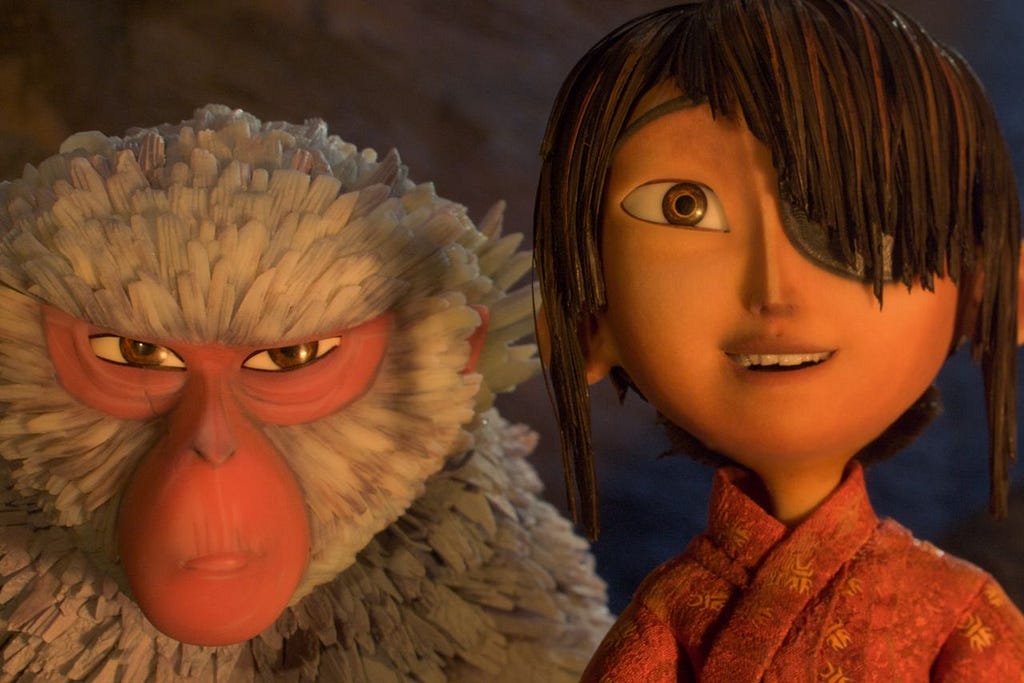
It broke ground in rapid-prototyping and replacement animation
Coraline, Laika’s first experiment with 3D printing, became the first feature-length stop-motion film to use replacement animation created in a 3D printer. Replacement animation is the technique of swapping out faces, body parts, and hair pieces physically as opposed to manipulating a puppet’s features by hand. These pieces are usually hand-crafted, limiting their production to, well, as many tiny heads as one studio’s budget allows. But incorporating 3D printing into the process allows Laika to scale that number up significantly, printing thousands of replacement faces, which are then attached to their puppet’s skulls with magnets.
Using a black-and-white 3D printer, Laika feeds images into a software program, which then processes and prints the images using layers of UV-sensitive resin to give it shape, size, and dimension. The faces are then hand-painted, one by one, to create, for instance, Coraline’s 207,000 expressions. (For comparison, Nightmare’s Jack Skellington, who was also created using replacement animation — although not with a 3D printer — had only 150 expressions.)
With Kubo, Laika turned up the heat, working directly with 3D printing company Stratasys to develop software to use with one of their color printers. This allowed them to layer colors during the printing of 23,187 faces without the painstaking procedure of hand painting each. The film also contains the biggest and smallest replacement animation faces ever used in a stop-motion movie.
With the addition of the color printer, and their new software, Kubo has 48 million expressions. Coincidentally, perhaps, he is also Laika’s happiest character, with the most smiling faces of any other protagonist combined.
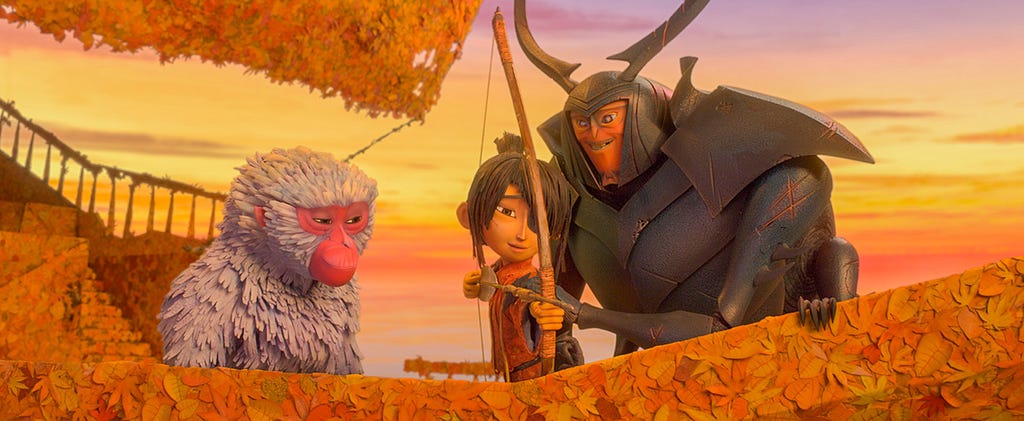
Its props pushed all the envelopes
Coraline was the first stop-motion film to create a 3D-printed fire. The computer received actual images of fire, which it then synthesized to print out the flames — providing yet another reason to hope that computers don’t become sentient.
Coraline was also the first film to feature a morphing sequence done entirely in stop-motion. Those who have seen the film will recognize this as when the Other Mother transforms fully into the horrific witch-like creature called the beldam. The scene is mesmerizing — and not just because it is a mind-blowing special effect, but because it exemplifies that brand of unnerving creepiness that only a puppet can achieve.
Never one to stop pushing the envelope, with 2016’s Kubo, Laika hit another milestone — the first 3D printed puppet. Grandfather’s Moon Beast, an undulating dragon-like glowing ghost menace, was made up of 881 individual parts with supporting metal armatures. The giant skeleton, which Kubo and his crew fights on their quest, stands at 16 feet tall, weighs 400 pounds, and is — unsurprisingly, for a form typically made up of miniatures — the largest stop-motion puppet to be animated in any film.
Yet the single-most stunning prop of Kubo, and arguably of any of the films in Laika’s entire ouevre, is a large ship made up of thousands of laser-cut autumn leaves, which Kubo conjures by strumming his magical shamisen. Although this ship could easily have been computer animated, both it and its cousin, the broken leaf boat — which had to be swapped in for a battle scene — were real miniatures. As a result, the boat sequence took 19 months to shoot. Now that’s commitment.
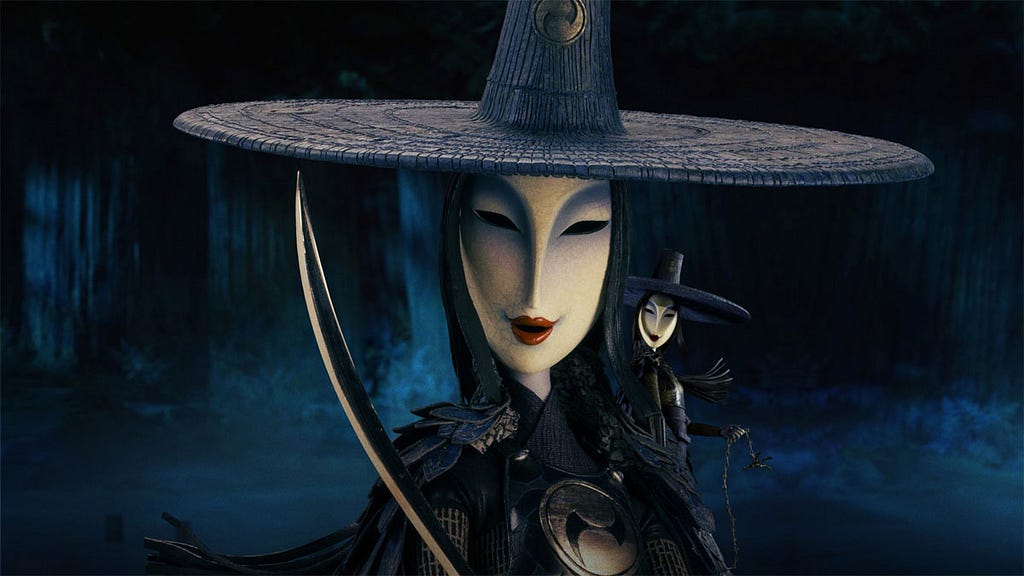
Its costumes have layers…and layers…and layers
The gloves that Coraline lusts over when shopping with her mother are hand-sewn in silk by a miniaturist using needles the size of a human hair. Kubo builds on this, adding technique to a body of in-depth research of Heian period Japan and its aesthetics to build a beautiful, intricate wealth of costumes. Grandfather’s armor contains over 150 individual laser-cut pieces on his breastplate, while Mother’s puppet wears layers filled with 2,000 laser-cut weighted pieces of fabric, in order to give her robes heft and dimension. The film uses traditional woodblock carving, as well as Ikat, Sashiko, Boro, and Katazome styles of weaving, knitting, and textiles to inspire its characters’ clothing and pay homage to ancient Japan in a thoughtful way.
The most sinister scenes in Kubo involve his Aunts, or “the sisters.” They are both voiced by Rooney Mara, whose voice is layered over itself to create a bone-chilling unison (this device is common in anime, like the Red Dragon Crime Syndicate in Cowboy Bebop).
While Kubo wages his quest to reclaim his other eye (and his humanity), the sisters employ their dark magic to track him down on a number of occasions. The sky darkens, the wind whips, and they float in, donning expressionless Noh masks as they beckon Kubo to join them.
Inspired by Tomoe Gozen, a female samurai warrior, and by historical female ninja warriors, the sisters’ cloaks feature 861 interlocking, laser-cut feathers that are each differently shaped so that they move seamlessly, like the wings of a bird. It would be easy to focus on their battle skills, but missing the sisters’ — or any of the characters — detailed, hand-crafted costuming would be a real loss for any fan of this incredibly difficult and time-consuming, but absolutely stunning, form of animation.
It’s about time for another Laika film and we can’t wait to see what they do with their costumes, props, and technology next. Until then, we’ll continue rewatching them, while repeatedly pressing pause to marvel at the meticulous detail in every stitch, leaf and 3D-printed dragon scale.
Thanks for reading The Dot and Line, where we talk about animation of all kinds. Don’t forget to for this article and follow us on Twitter and Facebook.


